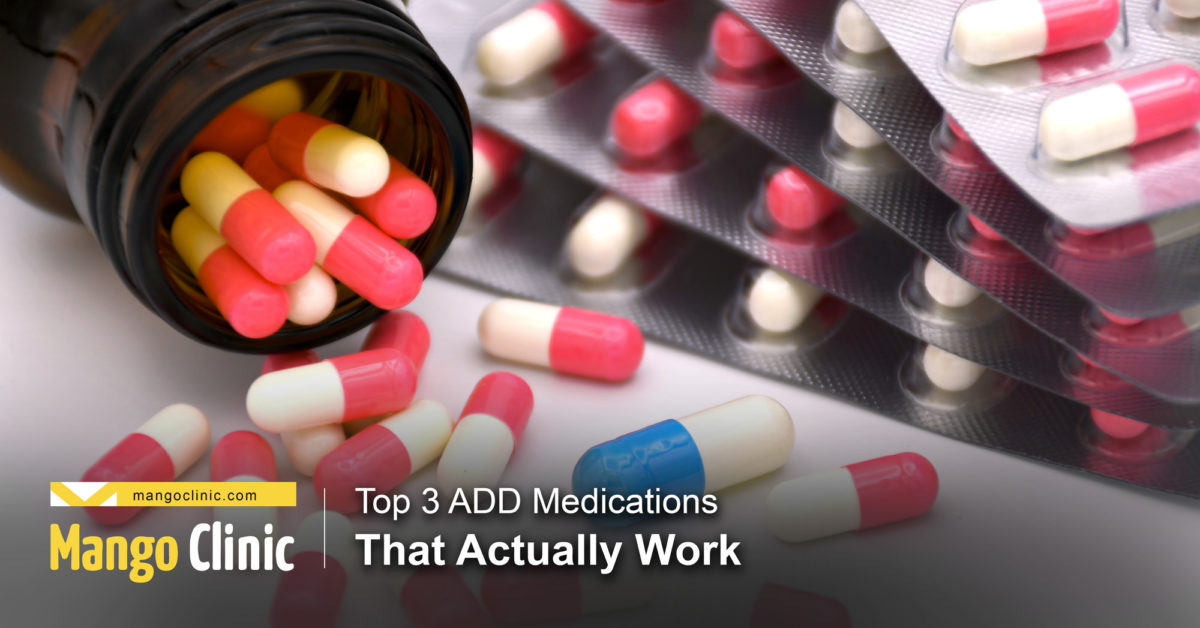Top 3 ADD Medications that Actually Work

Attention deficit disorder or ADD is a condition affecting the neurological system and is mostly characterized by trouble attending to instructions. Children with ADD will typically have problems with social interactions, completing tasks, and keeping up with assignments. The other symptoms of ADD include occasional outbursts when the individuals don’t get their way.
There is no proven or known cure for the condition, and growing out of it, as you would usually do with some conditions, is not typically possible. However, it is possible to manage the condition with a good lifestyle, good talking therapy, and some medications. Please note that early diagnosis and treatment are necessary to give the patient a chance to lead a healthy life.
Proper ADHD treatment can lead you towards a healthy life. Click the button below to book your appointment.
In the following discussion, we are going to discuss some of the standard drug therapies for ADD. ADD medications are usually categorized as stimulants and non-stimulants.
Types of ADD Medications
The two types of ADD medications available to you include stimulants and non-stimulants. But before we can go further, it is essential to understand how each of them works.
Stimulants
Stimulants are probably the most common ADD medication prescribed for up to 70 to 80% of people with ADD. The stimulant medication increases the level of norepinephrine and dopamine in your brain’s synapses. They take effect as soon as they cross the barrier from the blood to the brain, which is often between 45 and 60 minutes. The medication is fast-acting and works by toning down impulsivity or hyperactivity.

Non-stimulants
Non-stimulant medication is for the remaining 20 to 30% of ADD patients for which stimulant medication does not affect. However, it is not as fast-acting as stimulants and takes between 5 and 7 days for you to experience the full benefits of non-stimulant ADD medication.
Antidepressant
This is a side drug that most doctors will typically recommend together with other ADD medications. The majority of ADD patients will have mental health issues such as bipolar disorder, depression, and anxiety and will need antidepressants to manage them. Typically, getting an antidepressant is similar to an analgesic that you get along with other medications to increase their effectiveness. Well, antidepressants are usually prescribed to enhance the efficacy of stimulants ADD medication.
Get yourself evaluated for ADHD and related disorders. Click the button below to book your appointment.
Top 3 ADD Medications
Dextroamphetamine
The central nervous system stimulant usually works within 6 hours. Apart from ADD, the drug can be useful for narcolepsy. You can use it alone or with other medications. Most doctors will recommend that you take dose breaks because the drugs can be habit-forming or addictive.
Clonidine HCL ER
This drug is non-stimulant, and you can use it along with others to treat ADD. It is an alternative to stimulants and is most suitable for patients between 6 and 8 years of age. The medication works on the part of the brain responsible for regulating behavior, the way we express emotions, and attention.

Amphetamine Sulfate
The drug is a stimulant that you can either use alone or with another stimulant to treat ADD. It works by altering certain substances to increase the ability to maintain focus, pay attention, control behavior, organize tasks, and improve listening. The medication is also helpful with weight loss and is most effective with a low-calorie lifestyle. It can be useful with narcolepsy and other sleeping disorders.
Looking for medicinal ADHD treatment? Click the button below to book your appointment.
Conclusion
Some of the signs that the medication is working include better attention, improved mood, better sleep, reduced impulsivity, and better memory. It is always recommended that you use the ADD drugs according to the doctor’s prescription. Some of these drugs will have side effects, others will be addictive, and some of these may have withdrawal symptoms. However, you can reduce these adverse effects by following the doctor’s prescription.





